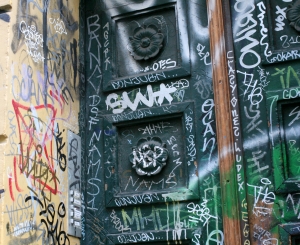Modern art has received some of the most brutal criticisms, mostly from those who were never really interested in art to begin with. This is mostly prompted out of a misunderstanding of what artist like Mark Rothko, Willem de Kooning, Pablo Picasso, and Jackson Pollack, Andy Warhol, Jean-Michel Basquiat are trying to achieve. Or, perhaps people know exactly what these artists are trying to achieve, but simply don’t like their aesthetic.
Either way, I’ve seen an odd amount of literature and people recently suggesting that modern art promotes ideals of Communism, anti-religion, anti-capitalism, and even anti-Americanism. But that is simply not true. And for those who don’t prescribe to such views, many still believe that modern art isn’t an actual form of art because they usually think their five-year-old could do the same thing. Again, a common misconception.
It truly does take years and years of practice or schooling (though usually both) to arrive at some of the aesthetics that modern artists do. They’re not ignorant of art history, and are very much versed in varied styles and ideas of past artists. While there may be a few hit-and-miss cases where artists were unaware of what they were doing, they are overwhelmingly of a minority in a sea of artists that know exactly what they’re doing with every abstraction they paint and every rule they break. But no, breaking a particular rule and even creating a unique style doesn’t necessitate that an artist know any art history—it simply just helps the process.
But still there seems to be a common perception that modern art’s technical aspects could be done by little kids. This is worsened when artists and historians state the common retort, “Well, your kid didn’t create that piece,” as if that was an actual defense. Kids can’t do modern art because they’re not responding to centuries of art theory and aesthetics to create a new form of art. They’re simply doing what their art teacher tells them to do. While that doesn’t mean your kids work isn’t art, it certainly doesn’t make them an artists, much less a modern artist. It just means they’re kids.
 Also, there seems to be this fatuous idea inculcated in society that art is only good when there’s a lot of technical skill required to make it—which invariably translates into: It needs to be realism or something damn close. But is realism really the standard of art we should be using? When you think about it, realism means absolutely nothing other than an artist’s egoism in their creation, presenting a replicated image that communicates very little other than an artist’s ability to paint realistically. Leonardo da Vinci’s work never challenged anyone. He just created pretty pictures for people to absent-mindedly gawk at in museums so that they could be considered high cultured.
Also, there seems to be this fatuous idea inculcated in society that art is only good when there’s a lot of technical skill required to make it—which invariably translates into: It needs to be realism or something damn close. But is realism really the standard of art we should be using? When you think about it, realism means absolutely nothing other than an artist’s egoism in their creation, presenting a replicated image that communicates very little other than an artist’s ability to paint realistically. Leonardo da Vinci’s work never challenged anyone. He just created pretty pictures for people to absent-mindedly gawk at in museums so that they could be considered high cultured.
Modern art has been pushing the boundaries of how art communicates with its audience for the past century, grappling with complex ideas and aesthetics for the pursuit of knowledge, understanding, and creativity of the human psyche. While many would like to go back to an era in which art did not challenge its audience, then isolate yourself in a conservatory of the past. But don’t embark into galleries filled with modern art only to simply state you don’t get it and then give up. Modern art is meant to be misunderstood and misinterpreted, but not abused with white-flag criticisms.
Rather than give up and say your kid can do as good of a job or that modern art just simply doesn’t conform to your petite senses of aestheticism, perhaps you should actually engage with what you are looking at and fight it, grapple with it, debate it, discuss it, whatever floats your boat. But I wouldn’t say it’s an appropriate response to simply go, “I don’t get it,” and then criticize modern art for being inaccessible. Maybe it’s inaccessible because you didn’t reach high enough.
A Defense of Modern Art,




